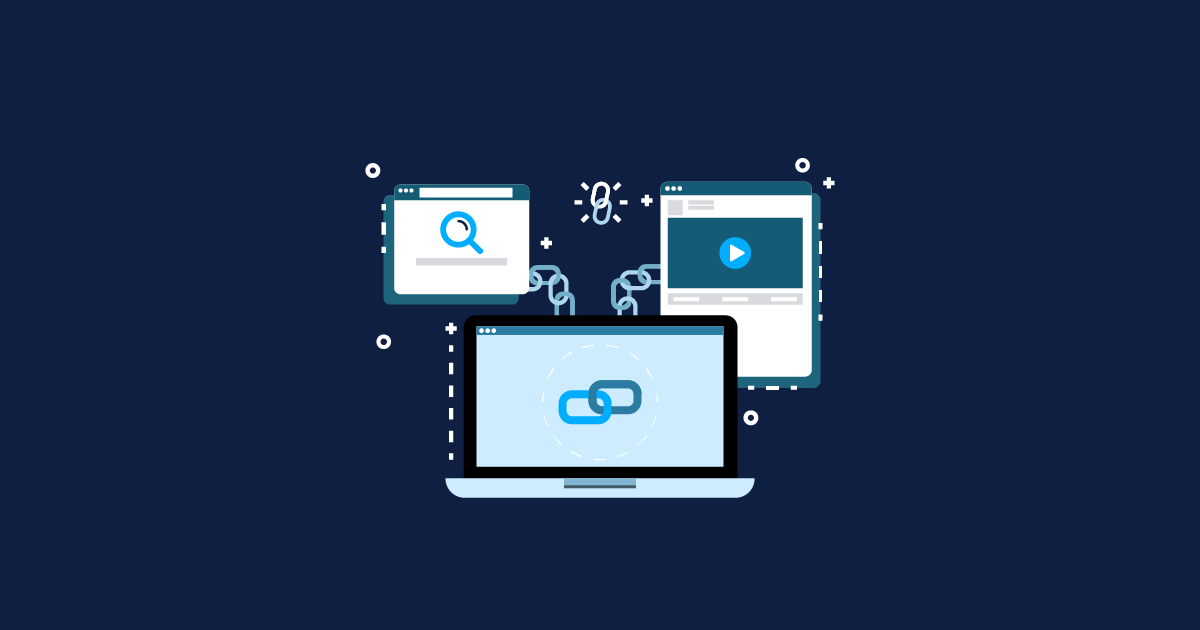OTT Testing: Everyone loves content.. Video is the most easy-to-digest content format and gives the much-required rest from the overabundance of online textual information. Probably, that’s the reason people watch a billion hours of videos on YouTube every day.
From news to sports, animated shows to documentaries, original series to videos captured on mobile phones, people crave video content. Well, that’s nothing new.
What’s on the rise is how people are engaging with video content.
The Rise of OTT Platforms
Today, nobody wants to adjust their life for a TV show schedule. Now, users can choose what content to watch, when to watch, and on what device. COVID-19 pandemic has shown us a new way of life – indoors. When people were completely restricted in the vicinity of their homes, they turned towards OTT platforms and started consuming online media content like never before.
To survive in this digital era, a comprehensive OTT testing strategy is the best way to ensure a best-in-class content experience.
In this new media age, a world without OTT platforms is like a world without electricity. We have already stepped into the world of OTT and it is going to stay. With over 62% of adults subscribing to a streaming service, the video streaming industry is expected to grow at an exponential rate.
Here are some more astounding statistics of the top OTT statistics.While the rise of OTT platforms is a huge opportunity, it is also a challenge. Any streaming platform cannot get successful just because the industry is growing. There is a strong reason why Netflix remains the top choice for TV and movie streaming.
Today, Netflix has over 200 million paid subscribers across 190 countries. Thanks to the ease of use, high-end personalization, and original content. The gist here is that you need to perform OTT testing effectively to achieve better viewership, revenue, and user satisfaction.
Why is Video Quality Experience Important?
Did you know that a delay of half a second can cause a 20% drop in user traffic? Now that’s the importance of user experience and speed of your platform. Low resolution, buffering, and lagging are the issues that viewers never like to experience. These quality issues can be very frustrating and leave viewers with a poor reputation for the brand.
Luckily, the video quality experience is getting better across the board. As reported by Conviva, the video start failures are down by 33 percent, buffering is down by 41 percent, and picture quality is improved by 25 percent.
This is all possible with the new and improved OTT testing techniques and best practices. Let us understand all about the testing of OTT platforms.
What is OTT Testing and why is it important?
OTT testing refers to the over-the-top testing process that gets done over internet infrastructure. It tests the video, voice, and data content over the internet while ensuring the latency of customer experience, security, and connectivity to ensure a high-quality experience. When it comes to the testing of OTT platforms, there are countless things to test, but everything boils down to four things:
Deliver personalized experiences with curated content recommendations based on the history and interest of customers.
Offer a diverse range of content with a logical organization to allow easy search and navigation.
Well-tested user interface and elements that enable users to interact with the OTT platform.
Use customer empathy to dictate consumer experience strategy that enables increasing user expectations.
Let’s take the example of Netflix. The platform is famous for recommending content based on user interests. Now, if you visit Netflix and it takes three minutes to recommend personalized content. So, you are not likely to be impressed with the overall experience. Even if the user interface of Netflix is great, your experience would be disastrous. And that’s why you need to perform full-fledged OTT testing to deliver a frictionless experience.
Why is OTT testing important?
In the world of video apps, the user chooses what and when to watch – and will give up soon if the content does not start streaming within 2 seconds. Also, most of the users have an average of three streaming media subscriptions, competition is also heating up. As the competitive pressure expands, the importance of OTT testing has increased to attract and retain customers.
When it comes to media streaming, quality can make or break your success. Don’t believe us? Research indicates that 76% of the customers don’t continue with their OTT platform subscription when they experience rebuffering while streaming the video. Surely, high-quality in the OTT market has become a sheer necessity.
Here’s why you need OTT testing:
Ensure quality across multiple platforms: Consumers expect content to be accessible on any device, be it mobile, desktop, tablet, and even console.
Bandwidth adaptability: Even in today’s digital world, Wi-Fi signals can vary big time. But consumers expect a continuous media streaming experience even when strong internet bandwidth is not available.
High video playback quality: When content cannot be played without delay, the audience loses interest. So, it is important to preserve the best user experience with high playback performance.
Recovery from downed networks: Consumers expect a high-quality user experience even when the network is down. OTT testing ensures the strength of your recovery plan and tests for possible network defects.
How to conduct OTT testing
Speed, reliability, and quality of experience are the key elements of the OTT platform. The primary focus of effective OTT testing is to ensure a seamless user experience without any technical glitches or delays. To perform a full-fledged OTT quality test, you need to consider all infrastructure, network, and application components that include:
UI/UX Testing: There are countless devices in the market, both hand-held and otherwise. An OTT platform needs to ensure a seamless application experience on all devices. The QA team should check for intuitive navigation, layout consistency throughout the platform, and functionality. And for the same reason, the user interface and experience should be highly flexible to accommodate a wide variety of devices. Therefore, UI/UX testing verification is a critical component to ensure a smooth user experience.
Performance Testing: It is one of the most crucial elements in the OTT testing process. It allows the platform to take the heap of countless stream requests across the globe. Your platform should deliver flawless quality and experience at all times, especially content performance. Performance testing ensures that your platform upholds the stability, reliability, and responsiveness of the server, regardless of the stream requests and bandwidth issues.
Load Testing: the number of users streaming media content is increasing every day, in fact, every minute. There are millions of users streaming one platform and all at the same time. Adding load testing in the test automation strategy helps you manage the high-demand scenarios. It also ensures that your application performs optimally, even under extreme loads.
Stream Testing: The delivery of content ought to be as strong as it is expected if the service utilizes Adaptive Bit Rate. Adaptive streaming is a technology designed to deliver video in the most efficient way possible and the high quality for every user. It helps in adjusting the compression level and video quality to match the availability of the bandwidth.
Localization Testing: As the OTT market grows globally, the demand for content localization has also increased big time as it helps in gaining more viewers. This has led to increased expectations of users as they want their online experience to adapt to their specific location. Localization testing is the key here. It tests for cultural relevance, linguistic accuracy, correct currency formatting, and customized symbols across different regions so that the customers can enjoy a highly personalized experience on the platform.
Interoperability Testing: Cross-Browser/Cross-Platform/Cross-Device test ensures the consistent user experience across a wide range of devices, be it handheld mobile, Smart TV, or alike. This testing process ensures a seamless user experience continuously over a multitude of devices.
Security Testing: While the OTT platform captures all account and payment information, and content viewed by users, consumer data security is highly important. The security OTT testing ensures that the content security frameworks are well managed across the platform. Some of the security frameworks include conditional access systems (CAS), digital rights management (DRM), and other exclusive frameworks. In this cloud age, it is important for OTT platforms to convey the content safely using appropriate security measures. It ensures the safety of sensitive data such as bank account details, personal details, personalized content watching habits, and more.
Network Testing: Carrying the service in low network areas, uncommon network conditions, and inadequate transmission capacity is crucial for OTT service providers. The network conditions can generate real-time circumstances under which the product viability can be verified. The service behavior needs to be simulated in different conditions like high or low bandwidth, lossy network, or similar conditions.
OTT subscription Testing: There are certain scenarios when the OTT subscription support is logged in on multiple devices or a single device at a time, or subscription support of HD channels or SD or UHD. It is important to keep a check on these scenarios as the unexpected combination of subscriptions can lead to customer dissatisfaction.
Start your OTT testing journey today
To succeed in this brave new world of video, you need to offer an alchemy of content, high-end personalization, seamless technology integration, and most importantly, an appealing user experience.
Considering these expectations, you should choose an end-to-end OTT testing service to ensure users a great escapade user experience. Because of high consumer expectations, a robust testing strategy is important to ensure the quality of user experience. This can be a demanding request for the manual testing process without sufficient testing tools and automation. On the other hand, test automation tackles all the QA testing needs for your OTT platform. With a best-in-class OTT testing strategy, you can enjoy these testing benefits:
Test coverage maximization: Allow QA experts to distribute tests across a range of platform combinations and operating systems at a much faster rate. It ensures that your web services, database, and user interface are in line with the expectations of consumers.
Cross-browser and device testing expedition: Manual testing for multiple devices and browsers can be a major drain on resources and time. With effective OTT testing techniques, automation workflows can be created for different browsers and devices along with detailed defect reports.
Faster go-to-market time: Manual testing can lead to diminished quality and product delays. While test automation can remove barriers across the development cycle and help you launch a bug-free streaming platform on time.
Improved scalability: Test automation allows your team to increase the number of test case executions across development cycles. It will help you rapidly scale end-to-end testing without requiring more human testers.




